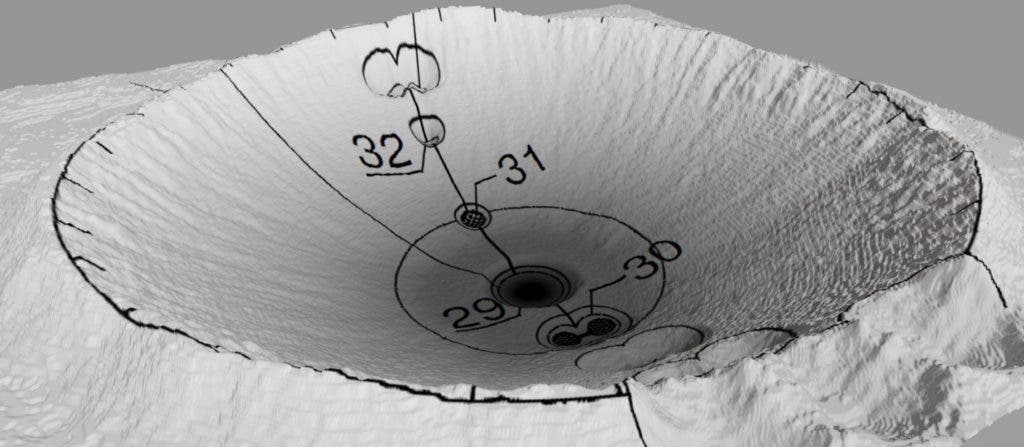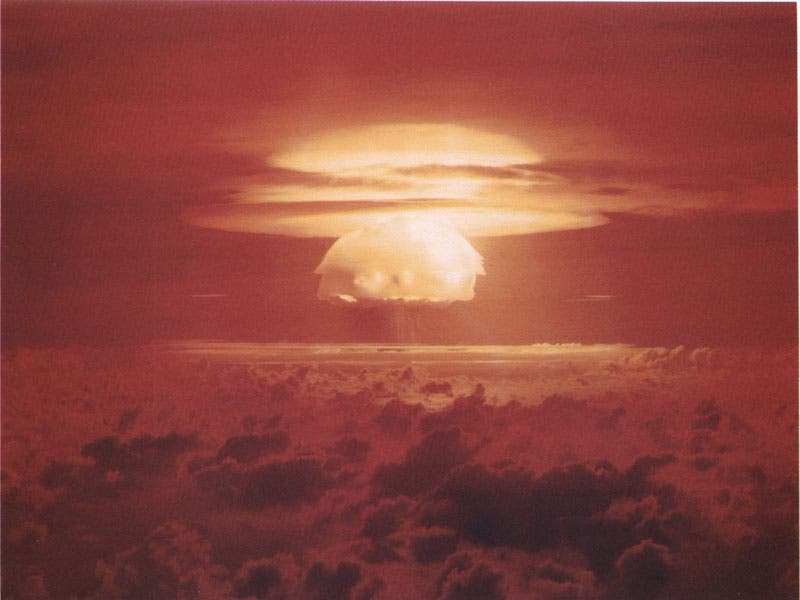Terraformation need not engineer an entire planetary surface. A city-region is adequate for inhabitation. MATT hits this mark on Mars in 2036. The Lake Matthew Team introduces their invention.
Terraformation Goal
Tibi Puiu crafted a provocative ZME Science article back in May: “Terraforming Mars: what it is and why we’d do something this crazy”. So why would we? To his mind:
“If humans are to ever become more than just a mono-planetary species, hopefully, an interstellar one, then we need to move our Earthling butts out of here.”
There’s something to be said for getting up and moving, just in itself, as any cardiologist will tell you. However, the scale and goal of the first terraformation remain to be determined. We, the Lake Matthew Team, are making our case for a small-scale, practical terraformation effort on Mars.
Tibi has described terraformation efforts that would require hundreds or even thousands of years to bear fruit, so to speak. Each of these efforts aims to terraform the entirety of planet Mars. But must the entire planet be terraformed? Arguably there are places on Earth which are in need of terraformation even today. Some environmental TLC is needed at many fallow desert sites. If some terrestrial sites can go without terraformation, some Mars sites can too. Clearly then, planet-wide terraformation is not a fixed requirement for the first go at Mars terraformation.
The smaller the scale of the terraformation, the easier it will be to implement. What is the minimum necessary scale? For a temporary facility, such as a capsule sustaining a one-month expedition, the minimum scale is zero. An expedition crew arrives with all necessary items onboard, and has no need of terraformation resources, which are superfluous for a very short stay. But what about a permanent facility? A hab, for example, sustaining a crew of a thousand year-round: what does it need from the local environment? Winter places the greatest stress on the hab and crew, with surface temperature dropping below -120 °C at night, and solar power dropping to effectively nil during bad-weather days. If the goal of terraformation is, as Martyn Fogg says, “enhancing the capacity of an extraterrestrial planetary environment to support life,” then the first order of business is enhancing the environment to support the lives of the crewmembers.
What is in short supply, in winter? Ground heat and electrical power top the list. A terraformed city-region of a few square kilometers could be adequate, if structured in such a way as to provide enough heat and power to sustain the crew in winter.
Impact
How can such a small-scale terraformation be accomplished? If we limit methods to those that can be implemented in our generation, and implemented under reasonable constraints on time, money and resources, the only clear candidate is impact by a celestial body. As a hypothetical example, we can consider the thermal effect of a modeled Mars impact, Fig. 1, from Schwenzer et al. 2012.

Schwenzer’s impact parameters:
- Mars surface temperature -60 °C
- Asteroid 0.89 km in diameter
- Impact velocity 8 km/s
- Bedrock without ice. (Adding 20% ice by volume requires a doubling of impactor diameter to produce the same thermal effect.)
Schwenzer’s impact effects:
- Transient (initial) crater excavated to about 3 km depth. (The central transient floor is subsequently covered with debris.)
- Crater central bedrock heated to +50 °C
- Crater floor bedrock temperature raised above 0 °C to a depth exceeding 2.5 km, melting through the frozen cryosphere completely
Here the asteroid’s impact has excavated or melted the cryosphere to a total depth of about 6 km below the pre-impact surface. If any water is released, where does it go? (We’ll assume the impact occurs at a low elevation with atmospheric pressure above 1 kPa, so that cold freshwater can exist as a liquid.) Here much of the ice released by impact vaporizes, saturating the crater atmosphere. Some of that vapor condenses and freezes within the crater, eventually melting and then trickling toward the crater center. Underground, freshwater within the central unfrozen “heat lens” also begins to migrate toward the crater center. Any brine surrounding the heat lens will also migrate inward, where bedrock temperature exceeds brine freezing point, which could be as low as -40 °C. Also, because the impact has melted through the cryosphere, any pre-existing aquifer directly beneath the heat lens will migrate under pressure, rising upward to the crater floor, provided that impact fracturing has rendered the bedrock permeable.
The crater bedrock cools very slowly. Even allowing for meltwater heat removal, the heat lens will persist for thousands of years.
Omaha Crater
We see that impact offers several potential sources of liquid water, and it also offers a wide range of bedrock temperatures and surface elevations. MATT’s unique Omaha Crater design aims to take advantage of such impact resources, to make life easier for the crew of a permanent facility. (The MATT impact site, impactor identity and flight plan are intellectual property under NDA, but specified.)
In our minimal layout (Fig. 2) we can point out some MATT design elements that extract heat and power.

In Fig. 2 some custom MATT depressions have been selected for their size, temperature and elevation, and incorporated into a minimal facility layout. Here depression (29) contains a lake, (30) contains subaqueous domes for hab and greenhouse, (31) houses a spaceport, and (32) contains a brine reservoir. Pipes for fresh water and brine are marked as straight lines. The heat lens extent (0 °C) is marked with a circle that passes through the spaceport.
Lake water must be treated for use in and on domes (30). Zero Liquid Discharge (ZLD) technology is a set of commercial treatment methods that can be adapted to Omaha Crater conditions and water composition. A byproduct of the ZLD treatment is brine, which is pumped into reservoir storage (32) outside the heat lens.
Heat and Power
At Omaha Crater, winter heat can be supplied to the domes (30) from bedrock, by running water piping over the warm lakebed as a heat exchanger, or else by circulating the water inside a warm bedrock borehole pipe. The power requirement for such heating is minimal, with a 300 m dome being heated with a pump that might pull only 10 horsepower, or 7 kW. This compares well with the megawatts that would be required to heat such a large facility on the unimproved ground outside Omaha Crater.
In winter, power for the water pump and other machines is provided only sporadically by photovoltaic (PV) solar panels. At Omaha Crater, brine reservoirs can supplement PV power with pumped hydroelectric power. In Fig. 2 a pair of brine reservoirs (32) has been established, with one reservoir located several hundred meters above the other. This positioning provides useful hydrostatic pressure under Mars gravity. Energy stored in the upper reservoir as potential energy is recovered as electrical energy when brine flows into the lower reservoir under pressure, passing through a pump turbine.
Excess summer PV power charges the hydroelectric reservoirs. Summer water flow also charges them. Outside the crater, ice-rich upland terrain is coated and sealed. Solar overheating forces high-volume melting. Meltwater streams down a channel cut into the crater wall, accelerating to hundreds of kilometers per hour and delivering tens of terajoules of kinetic energy at lakeside. Here a turbine converts kinetic energy to electrical, to help charge the reservoirs. We view the channel as a useful first canal on Mars.
Such a system can store many terajoules of energy, and release the energy even in mid-winter, due to the brine’s engineered low freezing point, which keeps the bulk of the reservoir liquid beneath a layer of insulating surface ice. The system could conceivably scale past 100 terajoules, with total capacity limited principally by the number and size of depressions to be employed as reservoirs.
Alpine Garden
The heat and power of Omaha Crater can do much to ease life for the crew of a permanent facility. Hot showers and hot coffee on a -120 °C morning – that’s terraformation life support, and MATT justification, right there.
Outside, on the open crater floor, terraformation can take a different form, as an “alpine garden”. The rocky and notionally landscaped crater floor will exhibit a variety of bedrock temperatures, debris covers, surface elevations and water depths. Water depth is important to terraformation of the crater floor, as hydrostatic pressure can augment the slight atmospheric pressure to support a greater range of plant life, and at temperatures exceeding room temperature, even two meters down.
Oxygen is needed for plant respiration, and it will be present initially as an excess product of greenhouses, propellant plants or bioreactors. Oxygen is vented into the crater, where UV radiation converts some oxygen into a local “ozone layer”. As on Earth, ozone protects life underneath. Once plant life has established itself on the crater floor, it contributes oxygen to its own ozone layer.
Greenhouses and ZLD plants can enrich the alpine garden’s water with ISRU fertilizer. They can also provide stabilizing silt and clay particles for pond beds, as needed.
By such means, Omaha Crater can host a variety of protected surface microenvironments where hardy alpine and polar plants try their luck at colonization. In this alpine garden plan, warm water is pumped daily from the lakebed to an encircling distribution channel cut above the heat lens perimeter. Water spills from the channel and splashes downslope, returning to the lake through an aqueous maze of living chutes, rapids, terraces, scree fields, streams and ponds.
Overhead, flurries.

Beyond Omaha Crater: The Omaha Trail
Other aspects of MATT, Omaha Crater, Lake Matthew and the envisioned Mars facilities and industries are presented in the pages and links at LakeMatthew.com.
Ideas for a high-efficiency transport system to Omaha Crater, including a “Deimos Dock”, “Deimos Rail Launcher” and a “Mars Lift” space elevator, were presented at the ISEC 2017 conference. This was a joint presentation of the Lake Matthew Team and Dr. Martin Lades. Presentation title: “Omaha Trail”.
References
- Schwenzer SP, Abramov O, Allen CC, Clifford SM, Cockell CS, Filiberto J, Kring DA, Lasue J, McGovern PJ, Newsom HE, Treiman AH. “Puncturing Mars: How impact craters interact with the Martian cryosphere.” Earth and Planetary Science Letters. 2012 Jun 15;335:9-17.






